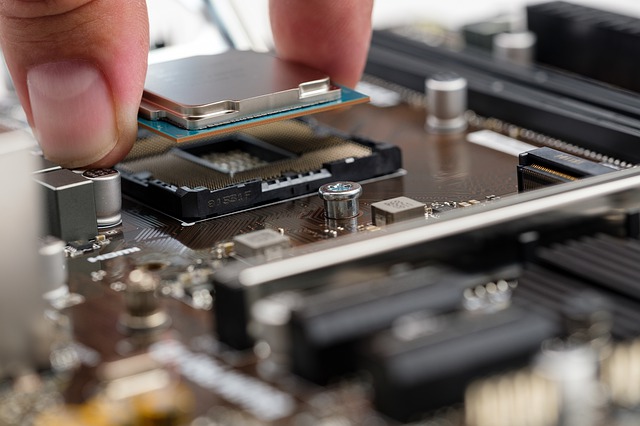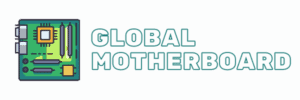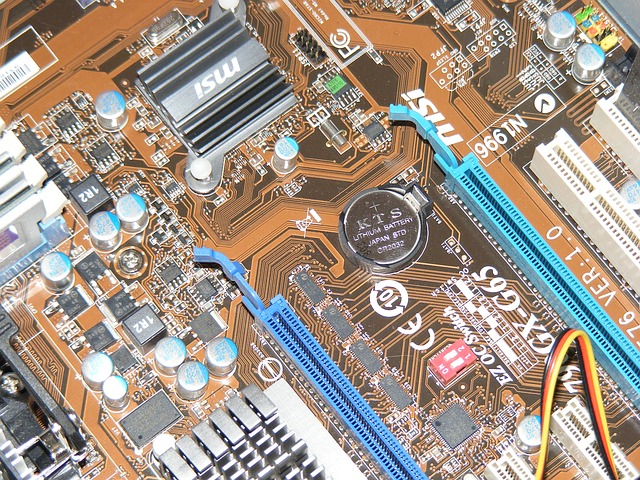The PC market is growing day by day and currently offers us great and best combinations of hardware in attractive prices. One of the most important components is the choice of one of the best motherboards for office desktop pc.
We must be very clear about your choice to make the right choice and that it meets all your daily life needs. In Professional Review we are going to teach you what you really need to know in the best guide.
The Best Motherboards For Office Desktop PC 2021
Below are we have shared list of some top motherboards for office desktop pc.
ASUS ROG Maximus XII Hero Motherboard
About this item
- Intel LGA 1200 socket: Designed to unleash the maximum performance of 10th Gen Intel Core processors
- Robust Power Solution: 14+2 power stages with ProCool II power connector, high-quality alloy chokes and durable capacitors to provide reliable power even when push the CPU performance to the limit
- Optimized Thermal Design: Except comprehensive heatsink, heatpipe and fan headers, features low-noise AI cooling to balance thermals and acoustics by reducing fan speeds and maintaining a 5 Celsius delta
- Fastest Gaming Connectivity: Dual Ethernet with 5Gb and gigabit Ethernet , LANGaurd, dual M. 2, USB 3. 2 Gen 2, and Intel WiFi 6 AX201 (802. 11 ax)
- Industry-leading Gaming Audio: High fidelity audio with the SupremeFX S1220A codec, DTS Sound Unbound and Sonic Studio III draws you deeper into the game action
- Unmatched Personalization: ASUS-exclusive Aura Sync RGB lighting, including RGB headers and Gen 2 addressable headers
- DIY Friendly Design: Pre-mounted I/O shield, BIOS Flashback, Q-Code and FlexKey
GIGABYTE Z490 X Motherboard
About this item
- Supports 10th Gen Intel Core processors
- Direct 11+1 Phase Digital VRMs with DrMOS Stages
- Extended MOS Heatsink VRM Cooling
- Dual Channel Non-ECC Unbuffered DDR4, 4 DIMMs
- Intel GbE LAN
- 2x M.2 slots, 1x Thermal Guard
- AMP UP Audio ALC1200 AUDIO DAC
Reference Link: gigabyte.com
MSI MEG Z490 GODLIKE Motherboard
About this item
- Supports 10th Generation Intel Core / Pentium Gold / Celeron Processors for LGA 1200 socket
- Supports dual channel DDR4 memory up to 128GB total (5000MHz)
- Triple Turbo M.2 with double-side M.2 Shield Frozr – transfer speeds of up to 32 GB/s bandwidth, with M.2 XPANDER-Z GEN4 S accessory card adds two additional M.2 slots
- 2x Thunderbolt 3 ports on the rear panel provide up to 40GB/s transfer speed. Supports daisy chain configurations and 4K displays.
- On-board 10G super LAN plus 2.5G LAN with Wi-Fi 6 (802.11ax)
- Frozr Heatsink designed with active cooling, Double Ball Bearings, Zero Frozr Technology, and MOSFET Backplates for high-performance heat dissipation
NZXT N7 Z490 Motherboard
About this item
- SMART CONTROLS: The N7 Z490 includes key features from our RGB and Fan Controller, allowing intuitive control of four RGB lighting channels and seven fan channels through CAM.
- INTEGRATED REAR I/O SHIELD: Layout streamlines installation with an integrated rear I/O shield and optimally placed headers for easier setup
- DIGITAL RGB LIGHTING CONTROL: Advanced lighting with numerous presets and custom modes
- BUILDING MADE EASIER: Includes Wi-Fi 6 connectivity and utilizes all PCI express lanes available from the CPU and chipset so everything works as intended.
- FEATURES: Include built-in Wi-Fi 6 connectivity, integrated fan controller, and RGB accessories supported across all manufacturers.
Better Motherboards and Relevant Concepts
We must take into account several concepts when choosing a motherboard:
• Components: Buying a good board should involve choosing good components, for example phases and capacitors. Asus has its Digit + technology , Gigabyte the Ultra Durable and MSI the Military Class .
All of them have excellent components, but who today assembles the best power phases and CHOKES is Gigabyte. We believe that they are the benchmark in the sector .
• Cooling: We must choose between passive cooling (without fans), with a fan or a kit with a combo with liquid cooling (For example, the Gigabyte Z170X SOC Force). Passive cooling is usually the smartest option, because it doesn’t incorporate the annoying little fan that eventually breaks down.
But… you will ask yourself: What components are usually refrigerated? Basically the hottest chips: power phases and main chipset of the south bridge.
• Chipset: It is in charge of the interconnection between the processor and the rest of the elements , controllers and memories of your configuration. The more advanced, it will have native support for USB 3.1 connections, it will allow connecting more graphics cards, PCI Express 3.0 or higher versions, etc.
It is one of the most important elements of a motherboard, because it will determine the working capacity of the set of hardware. We must also consider that there are overclocking-oriented chipsets and others that are not.
• Expansion ports: these are very useful for connecting graphics cards, external television controllers, sound cards … There are many types: classic PCI , PCI Express , or the current M.2 NVMe for high performance storage units.
Before continuing with the list of the best motherboards on the market , we stop at this point because we find it very interesting to detail a little about it. The chipsets of the Z490 motherboards (Socket LGA 1151) currently have 24 LANES, while the AMD X570 have 20 .
What are LANES? Are the lanes that carry the processor information to the rest of “fast” parts such as a graphics or M.2 NVMe SSD disk.
With this argument we can affirm that it is a factor to take into account for the configuration of our PC. For example, if we want a Gamer PC with 2 Nvidia graphics cards, Intel’s Z490, Z390 series, and AMD’s X570 or B550 we will do well, but if we want three or more graphics cards we will have to opt for the X299X or TRX40 platform with more LANES or buy a motherboard with a PLX chip .
Main Connections That You Should Know About The Motherboard of Your PC

For all this, the motherboard is one of the most important components of any PC , in this section we will see all the most important connectors that a motherboard includes, and what is its main function. The components that we will be able to install on our equipment will depend on them.
CPU socket
The CPU socket is an array of hundreds of metal contacts to which a PC’s central processing unit connects . The CPU socket supplies power to the processor and allows data to be sent to and from the processor from main memory .
Intel and AMD use different sockets, so motherboards are only compatible with models from one of the companies.
Memory sockets
A typical motherboard has at least two sockets for random access memory (RAM). RAM acts as a high-speed system to temporarily store the data that programs need while they are running .
When the processor needs instructions, it receives them from RAM, and when it saves a document or file, it goes from RAM to the main storage unit.
PCI / PCIe connectors
Many motherboards have PCI connectors for additional expansion cards. These connectors are long slots that cards are inserted into.
There are several types of add-in card connectors. Some of the most common include Peripheral Component Interconnect Express (PCIe) and Accelerated Graphics Port (AGP) , used primarily for video cards, and Peripheral Component Interconnect (PCI) , used for other types of add-on cards such as sound cards and storage controllers.
Hard drive connectors
Every motherboard has at least 4 hard drive connectors. Today’s motherboards use Serial Advanced Technology Attachment (SATA) hard drive connectors, which are L-shaped to ensure cables are connected in the correct direction.
The old Integrated Drive Electronics (IDE) connector uses two rows of 20 pins each. Some motherboards have connectors for SATA and IDE drives. The CD or DVD drive also connects to an IDE or SATA interface.
M.2 socket
The M.2 socket is quite recent, it is the connector where the most modern SSDs are placed, that is, those that are based on the M.2 format .
These slots can be connected to the processor’s PCI Express complex using 2 or 4 Gen3 or Gen4 lanes on the most powerful boards, or they can also have a SATA III interface.
Internal USB and audio connectors
All motherboards have the odd internal connector to extend their USB port connectivity. We are going to use these connectors when we purchase a chassis that has this type of connectivity on its front.
There will normally be two types of internal USB connections on the motherboard, one on the side for USB 3.2 (formerly USB 3.0) with 19 pins in two rows, and one or two more for USB 2.0 in the lower area with 9 pins. A USB 3.2 Gen Type-C header is also available on the higher-end models.
In addition, there will be a connector for the 3.5 mm Jack ports that has the I / O panel of the chassis, on-board buttons, the LED debug panel, the board’s boot post and extra elements that the manufacturer wants to put in.
TPM connector
The TPM connector is one of the additions that has been in all motherboards for years but few know of its existence and usefulness. With this connector we can install a small expansion board that will be in charge of providing us with access to our encrypted equipment with hardware protection.
Fundamentally it was introduced with the objective of giving functionality to Windows Hello, the authentication method by biometric characteristics of Windows.
Rear panel I / O connectors
Motherboards have connectors for different types of peripherals, usually located on a back plane that remains exposed at the back of the PC case when the tower is closed.
Some motherboards have pin banks, which can be used to connect additional peripheral ports on the front of the computer case.
Power connectors
Every motherboard has at least one power connector. This connector is used to bring power from the main power supply to all installed components .
Because some of today’s PCs have very high power requirements, some motherboards have additional ports for auxiliary power connectors. Generally we will find a 24-pin ATX connector and an 8-pin EPS connector.
Lighting connectors for the box
On the side of the motherboard closest to the front of the PC case are the case connectors, a bank of pins to which very small cables connect.
The connectors on the case are used for the power and status lights on the front of the case, as well as the power button that turns on the PC.
Fan connectors
These connectors are specifically designed to connect to the CPU cooling fans and the PC chassis fans . The system BIOS monitors the CPU cooling fan speeds, and if the fan is not connected to this header, you may get an error when starting the PC.
Many motherboards include secondary fan power connectors, these connectors are primarily used to power and monitor multiple case fans.
AMD or Intel?
This is the eternal question when setting up a team. We see the 4, 6, 8, 12 and 16 cores of the Ry zen series (AM4) of spectacular performance and the 4, 6, 8 and 10 cores of the mainstream series of Intel (LGA 1200).
What is better? It has been shown by active and passive that until now, Intel offered better performance (IPC) , but with the release of the new Ry zen 5000 this has turned in favor of AMD, since these 7 nm CPUs present incredible improvements’ in performance in IPC and especially in multicore, which even exceed Intel’s top-of-the-line range.
The blue brand, for its part, maintains its architecture at 14 nm at least for the desktop platform, optimizing its CPUs to the unspeakable to gain IPC by dint of clock frequency and TDP .
It has been forced to implement multi threading throughout its range and more cores, and the truth is that in games it is still not bad, since they still perform a little more than the AMD in this territory.
In the enthusiast platform, AMD also dominates with an iron fist thanks to its Thread ripper 3000, equipped with up to 64 cores and 128 threads , leaving Intel’s Core X series light years away from them.
Another issue is if we want a Low-Cost PC and here we believe that AMD has no rival. Currently, they offer us their APUs and PC configurations with socket AM4 .
They are good, they have very good integrated graphics card ( iGP ) and their A320 motherboards are very cheap ( less than 60 euros ). For less than 300 euros they have a complete team working at home.






